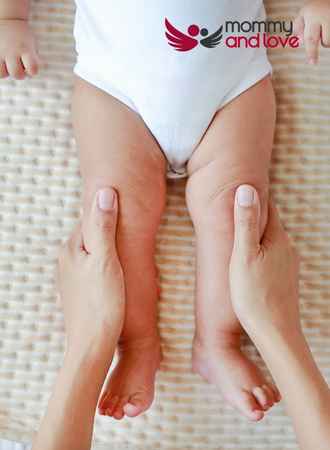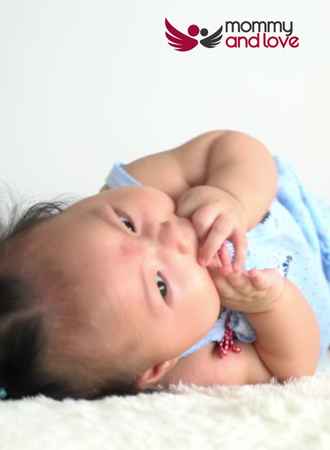Becoming a new parent has its perks, but it comes with anxiety and many questions. If you go in not knowing what to expect, it can be a scary experience. When that bundle of joy finally comes, all you want to do is protect your baby with your life.
As babies grow, they move around more and make sounds that you learn are normal, but every now and then, a baby will do something that you did not expect, such as jerk its leg.
Why does my baby’s leg vibrate? That is a question that many first-time parents may ask when they see their babies flinging their arms and legs around, and even babies lip quivering.
It is a natural instinct for infants to move their extremities, but there are occasions when odd vibrations can indicate a problem.
Infant Leg Shaking Causes

- Babies dream, and sometimes they twitch or jerk during sleep. The involuntary movements usually last a few seconds, can reoccur, and are present in all ages.
- Diaper changes can irritate babies, causing them to twitch or stiffen their legs.
- Infants explore their surroundings by moving their extremities, including their legs.
- Their nervous systems are still developing, causing baby foot tremors and other involuntary movements.
- Babies may shake or jerk when they are hungry.
- Babies shaking often happens when they are falling asleep
Several other reasons may explain why your baby shakes its leg. As babies develop, their bodies must learn more about the environment, and various movements help them do that.
Your baby’s neurological system is still developing so you may notice quivers or shakes during the first few months.
Baby Leg Tremors by Age

Each stage of development brings different behaviors. Knowing what to expect can decrease the anxiety of a new parent.
Infants within the first few months of age easily startle, causing them to extend their arms and legs, and arch their backs.
This activity is the Moro Reflex, or startle reflex, and is a normal part of their development.
Babies sometimes experience nocturnal myoclonus (twitching or shaking during sleep). Anything can startle them during those times, causing them to make sudden movements.
Babies do not naturally twitch when they are calm, but particular movements are natural. As babies grow, they develop fine motor skills with their arms and hands while stretching their legs.
Newborn

A newborn’s leg shakes when it cries, and its arms may also flail during crying as a natural way of getting attention. Those reflexes should end around one to two months.
If not, offer your baby a pacifier. Tremors tend to stop during sucking.
Elevated hormone levels, such as norepinephrine, can trigger newborn leg shakes. The infant’s body is responding to its new world. The numbers eventually decrease, as well as the jitters.
Babies are born with an immature nervous system and when the baby shakes leg it is perfectly normal.
As their nervous system develops, so does their ability to control their muscles. Until then, your baby may have tremors or startle easily.
A newborn reflex, like the Moro Reflex, may make your baby’s legs shake when startled and this is completely normal.
Four Weeks

During the first month, your baby’s head, arms, and legs may twitch periodically to prepare for upcoming milestones, such as holding up the head and rolling over.
Also, your baby is still adjusting to a new environment and extra space it did not have in the womb. Newborn leg shaking is its way of adapting.
Six Weeks
A 6-week-old’s leg shaking is most likely due to the underdevelopment of the leg muscles. The baby could also be preparing to hold its head up.
Two Months
It is normal when a 2-month-old baby’s leg shakes as long as the episodes are short and random. The jerking may become smoother and more natural.
Shaking that becomes more frequent or develops a particular pattern needs a pediatrician’s attention.
Four Months

In a 4-month-old baby, leg tremors may signify that your baby is preparing to roll over or sit up. The baby might make sudden movements as the muscles continue to strengthen.
Six Months
Baby tremors at six months may indicate it is cold. Due to the distribution of brown fat, babies do not feel cold until they reach about six months old.
Baby movements that appear too floppy or flaccid warrant a call to the pediatrician. Illness can cause significant changes in an infant’s behavior.
6 to 12 Months

Babies are learning how to sit up by themselves at this stage of development. Kicking is a common activity as they try out new movements and test what they can do with their bodies.
Some babies may start to crawl at this age, and the movements help them move forward. Once in motion, your little one will probably use their arms and legs to speed up or slow down
Toddlers
Babies who have started walking (or crawling) are more mobile at this stage. They are fine-tuning their skills and exploring their world.
They are also starting to find new ways to express themselves, which may include shaking or kicking their legs for no apparent reason.
As your child grows and develops, you will notice that his or her leg shakes are less frequent and last a shorter time.
However, these movements may occur occasionally as part of normal development.
Why Do Babies Shiver?

Low blood sugar (hypoglycemia) can cause babies to shiver. Newborns are at higher risk for developing hypoglycemia. Shaking or tremors are common symptoms of the condition.
Have you noticed your baby shaking its leg while feeding it?
If you breastfeed and consume coffee or other caffeinated beverages, your baby may twitch or jerk from the caffeine.
Little babies can also shiver for a number of reasons. One common reason is that they are trying to regulate their body temperature.
Babies have a difficult time regulating their body temperature, so they may shiver when they are too cold or too hot.
Signs That Shaking is Abnormal

In extreme cases, newborn leg tremors happen if a baby is having a seizure.
The difference between normal twitching and convulsions is the intensity of the shaking.
Baby leg shivering while seizing is more like muscle jerking with eye blinking and, in some cases, sucking.
Take note of these other ways to tell if your baby may be having seizures.
- Babies do not cry while seizing.
- Their twitching or shaking movements are the same during each episode.
- The episodes occur while the child is lying still, such as during sleep or with no triggers.
- The baby’s facial expressions, breathing, and heart rate are different than usual.
- The repetitive movements do not stop or change when you touch the baby.
- One side acts differently than the other, or both sides react simultaneously.
- Symptoms such as sucking movements of the mouth or eye blinking are also present.
If you notice any of the above signs, there is a problem, and you should get help immediately.
Although symptoms are rare, baby foot tremors could indicate your infant is deficient in Vitamin D, which is common and treatable.
Your pediatrician can determine if that is the case. Low Vitamin D levels are also preventable through supplements.
The Bottom Line on Baby Leg Tremors

Shaking or trembling of a baby’s leg is usually due to them still developing their motor skills and coordination.
As they grow older, their muscles will become stronger and more coordinated, and the shaking will stop.
If you are concerned about your child’s shaking, or if there are frequent seizures accompanied by other symptoms please consult your pediatrician.
Remember it’s considered normal for baby start when they hear a loud noise or have a diaper changed.
If they startle when falling asleep it may be nocturnal myoclonus, which is a completely benign condition (see below).
Frequently Asked Questions
My baby shakes sometimes when I pick it up. Does that mean something is wrong?

Picking up babies while they are asleep can startle them. If they are awake, maybe they are happy that you are holding them, especially if they smile as you lift them.
Can you explain why my baby shakes its leg like a dog?
Your baby may be hungry or uncomfortable. Trembling that stops after feeding or repositioning should be no concern. Your baby may be telling you it is wet, dirty, or gassy. You may need to check its diaper.
Is it normal for a baby’s leg to shake?

Yes, it is perfectly normal for a baby’s leg to shake. This is usually due to the fact that they are still developing their motor skills and coordination.
As they grow older, their muscles will become stronger and more coordinated, and the shaking will stop. If you are concerned about your child’s shaking, please consult your pediatrician.
What is Benign Neonatal Sleep Myoclonus?

Benign neonatal sleep myoclonus is a harmless brain disorder that affects newborns, usually when they are sleeping.
Babies with this condition sometimes shake or twitch their arms and legs involuntarily as they sleep.
Other symptoms include twitching eyelids, grimacing and jerking of the body. Benign neonatal sleep myoclonus is normal and can be easily treated.
Benign neonatal sleep myoclonus usually disappears on its own, within a few months or less than a year after birth.
Most babies with this condition don’t require any intervention and grow up to be perfectly healthy and normal adults.
However, if your baby’s symptoms are severe or last longer than a year, your doctor may recommend treatment.
Treatment options for benign neonatal sleep myoclonus include medication, physical therapy and occupational therapy.




